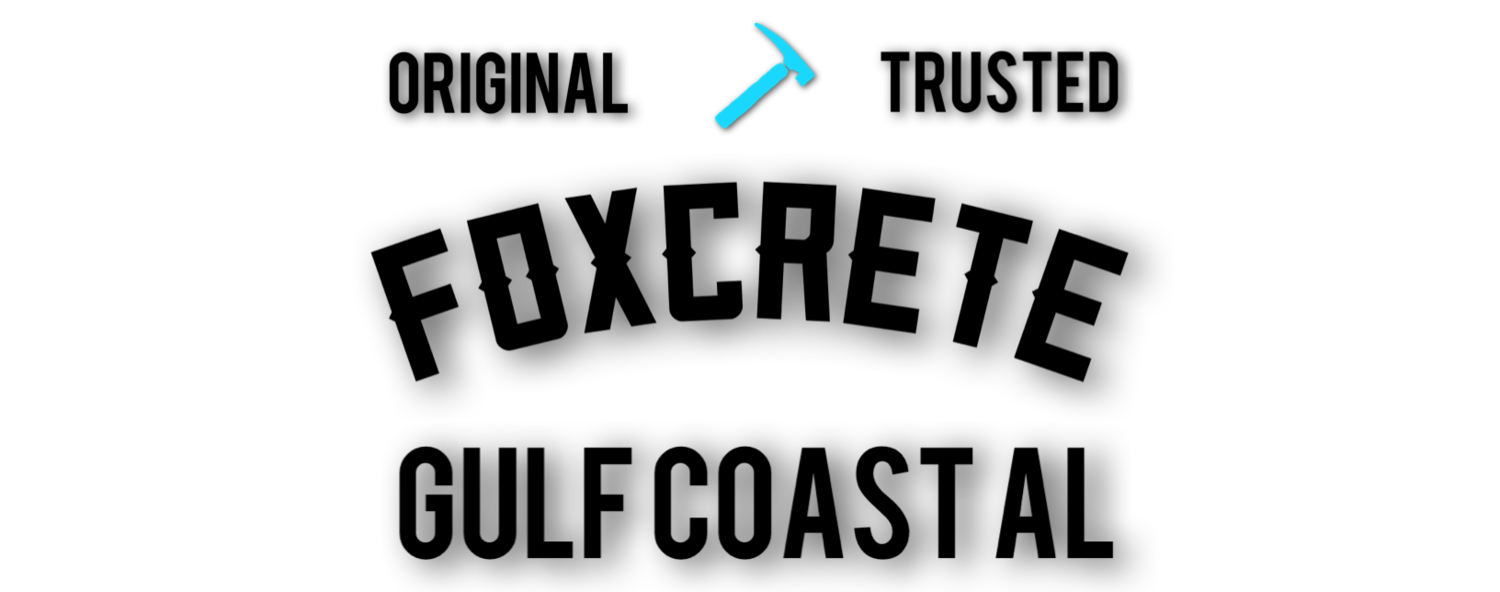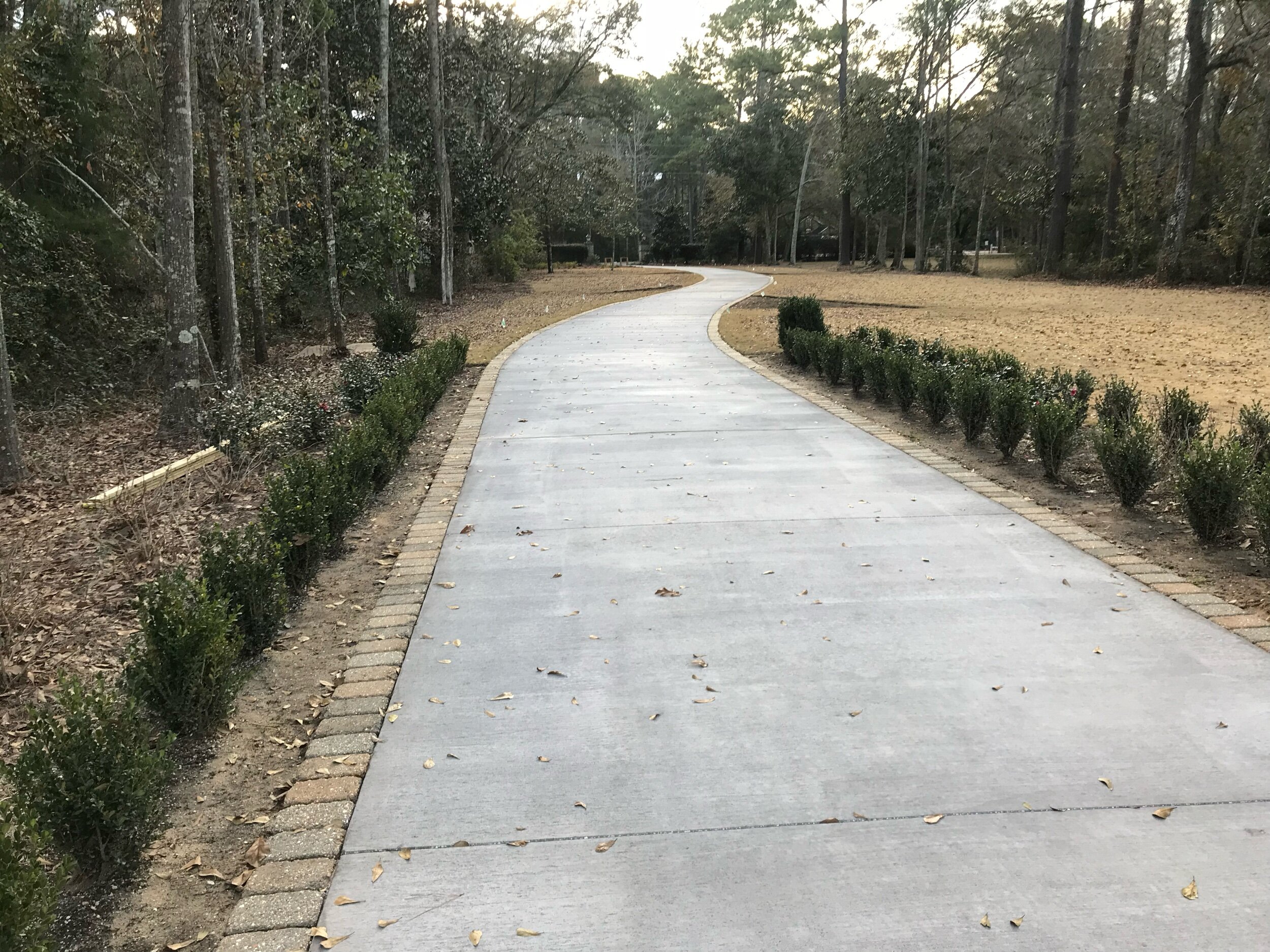
Tried and Proven Methods.
So you are interested in a new driveway? Fantastic. Concrete is a premium choice for this application and asset to your home or business.. until it falls apart and now your potential buyer is asking you to reduce your price by 10k or more to compensate for your failed driveway. We all know the old saying: There is two types of concrete, concrete that has cracked, and concrete that will crack. Does this have to be accepted and an excuse for your project to fall apart? We at Foxcrete, are a concrete contractor that doesn’t accept that as the social normal. Yes, it is impossible to completely warrant cracks, mostly due to its imperfect nature of material, however, with years of experience, we can guide you to tried and proven methods that will stand the test of time.
What makes a good driveway?
I mean, concrete is just concrete, right? Why are some driveways a cracked mess, while others seem to hold up well? There are so many variables to this question! Here are a few reasons driveways crack and fall apart!
1.) Compaction. Compaction is incredibly vital in your driveway construction. If your driveway is placed over soft dirt, it will eventually settle as the dirt underneath compacts; this causes the concrete to lower with the dirt and crack! Concrete isn’t very strong in regard to tensile strength. (Similar to breaking a pencil in two.) We take extreme preparation before concrete placement to ensure you have an excellent surface to place your concrete over!
2.) Reinforcement. We urge all our customers to use Steel or Fiberglass Bars placed in the concrete before installation. The Steel or Fiberglass Rebar helps combat the low tensile strength that concrete, by default, faces.
3.) Water to Cement Ratio, this is a big one! Adding access water to your concrete repeatedly on arrival causes your concrete to weaken and puts you at a higher risk for what is called Shrinkage Cracks; this could be an entire discussion alone! A good rule of thumb, for every one gallon of water added per yard of concrete, you lose at minimum 100 PSI. Ideally, you want to keep a ratio of 40%-60%. Concrete only needs 30% to initiate the hydration process ( get hard ). The rest of the water is for increased workability; This is where it is often abused. Beyond this, you weaken the concrete significantly. I know this specific ratio doesn’t mean much to the homeowner; however, it correlates directly to cracks. As the concrete hydrates and water evaporates through the slab, this creates voids, if you will. Which then turns to cracks as the concrete shrinks to cover the empty space. Therefore, causing a crack is a direct result of the high water-to-cement ratio; this is why you have companies placing concrete with limited help or personnel; they are pouring concrete to a near point of self-leveling. This doesn’t require much help to install, due to the very nature, it basically finishes itself. When you place concrete with a low water-to-cement ratio or slump, this requires additional help as the concrete isn’t as pliable and easier to move. This is part of the reason Foxcrete has so many personnel on your project to ensure your project is installed at a reasonable slump.
4.) Inadequate or non-existent control and expansion joints! Concrete has to have room to move! It expands and contracts with the heat and cooling cycles. You can use expansion material and saw-cut or hand-tool straight-line joints to induce cracks below the straight joints unseen. We prefer to saw-cut or hand-tool our joints on anywhere from 5' to 10’ centers. This allows us to control where we want the slab to crack and allows it to be hidden below the straight-line joint.
5.) Sometimes concrete will crack even with all the preparation. Minimal cracking is acceptable; however, major settling cracking is avoidable in most all cases.
Remember, concrete likes to be square! The smaller squares you can make with expansion and control joints, the less chance you will have at a random stray crack!I mean, concrete is just concrete right?
Why is some driveways a cracked mess, while others seem to hold up well?
There are so many variables to this question!
The absent of these examples are a few reasons driveways crack and fall apart!
Residential Applications:
From Pensacola, Florida, to Mobile, Alabama, we have happy customers who trust Foxcrete as their choice contractor for their new driveway or concrete project. We understand the amount of time and dedication you, as a homeowner, spend keeping your property beautiful. At Foxcrete, we have measures in place to make salvaging your grass and landscape an absolute priority for our team. We do not start a concrete project to leave you with an unplanned lawn and landscape expense.
Tools, equipment, and experience are the three things that allow us to do a top-quality concrete job for you in the most expedited manner to get your life back to normal! As excited a new driveway is, we realize the building process is still an inconvenience to your lifestyle. In most cases a driveway removal and installation takes two days and larger projects three. Once completed we recommend seven days before you can drive on your concrete.
COST:
The cost of the average driveway without the removal is around 5.50-7.50 per square foot. (Length x Width x 7.50 = Y )
Concrete Removal is normally around 2.00-4.00 per square foot, depending on access and other challenges.
Specifications:
We offer several fortified tiers of driveways: Bronze, Silver, and Gold
Driveway: 5” Thick / 3000 PSI Concrete / Fiber Reinforcement / Mechanical Compaction. 7.00 Sq/ft
Good Driveway: 5” Thick / 3,500 PSI Concrete / #3 Fiberglass Reinforcement Bar on 3’ ft center both ways / Fiber Reinforcement / Mechanical Compaction. 8.00 Sq/ft
Better Driveway: 5” Thick / 3,500 PSI Concrete / #3 Fiberglass Rebar Reinforcement Bar 2’ On center both was / Fiber Reinforcement / Mechanical Compaction. 8.75 Sq/ft
Best Driveway: 5” Thick / 3500 PSI / #3 Fiberglass Reinforcement Bar 18” on center both ways / Fiber Reinforcement / Mechanical Compaction 9.00
Price does not include extensive site work or demolition.
Google Review - Orange Beach, Alabama / Asphalt Driveway Removal and Concrete Install!
“The Foxcrete team is amazing! We have built many homes and by far they provided the best concrete service we have ever experienced.”


















